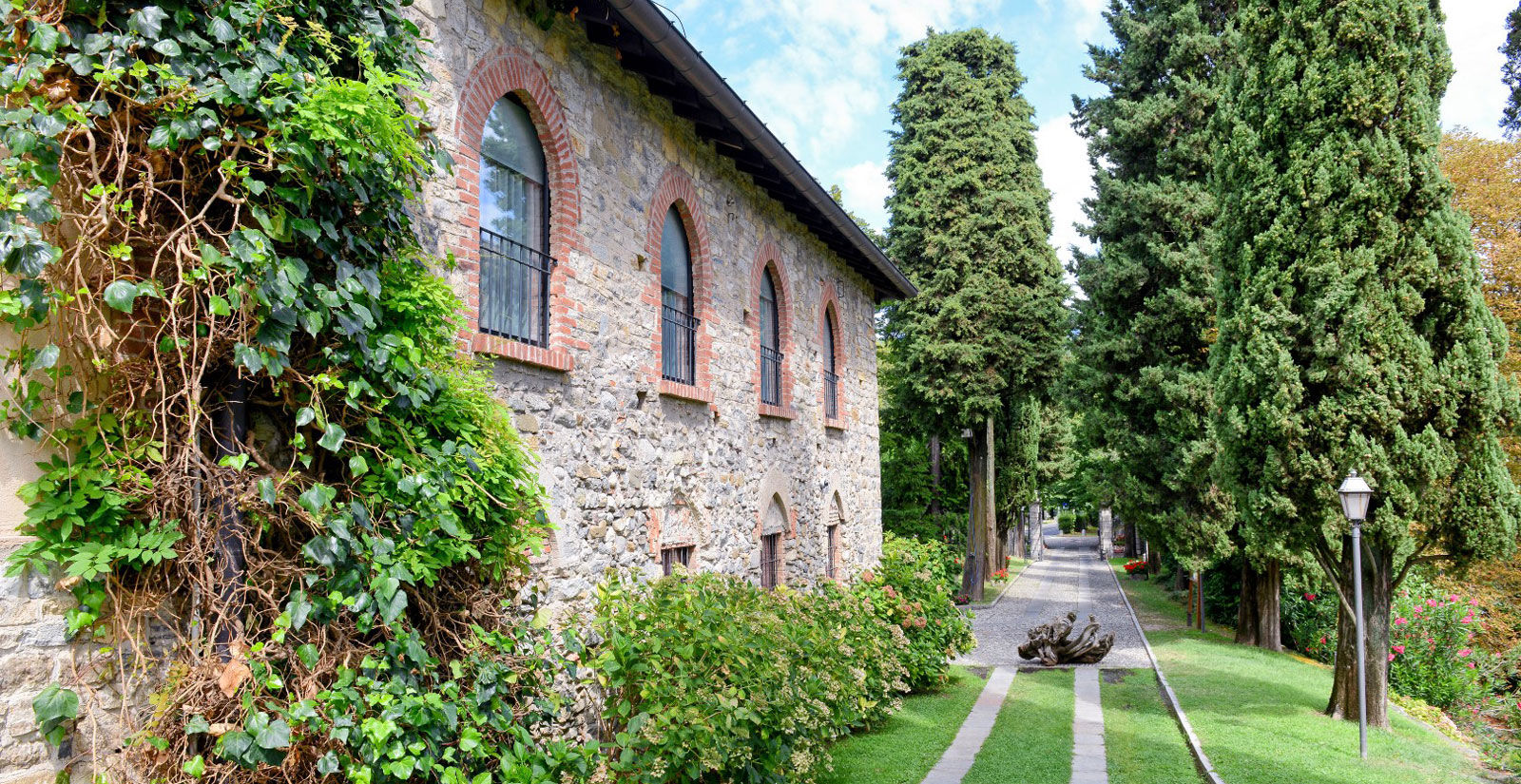




Date of birth of Cstello di Casiglio. A square military outpost rises on the plateau, within whose court is a well.
The second floor and the square-plan tower date from 1100. In the next century, the building was enlarged, and, as a result, the courtyard lost its characteristic central structure. The remains of the oldest core are still visible in the facade that looks toward the cemetery.
It is said that the castle's construction, as we see it, came about at the behest of Cardinal Beltramino, the most influential figure in the Parravicini family, who lived during the first half of the 16th century. In fact, a document in the parish archives attests to Beltramino's birth within the very walls of the castle, thus suggesting that he did not find it but, if anything, restored it and brought it to splendor.
During the 1400s, the castle probably became the seat of the Consul of Justice of Milan, and the building was restored and used in part for public services. During this period, the upper floor's walls were frescoed, and the building was expanded, but without changing the structure of the existing layout.
In the second half of the 1500s, the castle passed from the Parravicini to the noble Galimberti family. Subsequently, from time to time, it was appropriated by the various households of the local bourgeoisie.
The fief returns to the Parravicini family.
Apparently, a fire devastated the original tower, which was later rebuilt on the left side of the castle.
The fortress is restored and used as a noble residence. The castle houses collections assembled by the owner of the John Cavalleri, who gathers as many as 22,000 ancient coins, 10,600 volumes of art and ancient history, medieval weapons, clothing, ancient costumes, and local archaeological finds.
King Victor III, then Crown Prince, travels to Casiglio. Here, he purchases a particular coin, a "quattrino", that becomes part of his prestigious numismatic collection. Unfortunately, Cavalleri's celebrated collections were later dispersed among his heirs. The abandoned castle was used for agricultural work and then converted into a rustic in the new residence area in Villa Elena.
The castle, now dilapidated and unfit for use, is entirely renovated, restoring every original part without changes to the original structural layout. During the works, conducted under the artistic direction of the Superintendence for Environmental and Architectural Heritage of Milan, the original medieval flooring in stone slabs, terracotta and river pebbles were brought back to light.
Special care is, moreover, given to the wall frescoes from the 1400s, which have been ruined by time and vandalism.